Investigatory Project #2: The Potential Of Azadirachta indica and Chromolaena odorata as Insecticides Against Musca domestica (known as HOUSE FLY)
All lives on earth depend so much on plants may it be directly or indirectly. In addition, many plants has the potentials that can provide the basic materials needed to improve the chemicals and drugs that are useful in our lives. Some of these contain potentials to be an insecticide.
This study aimed to evaluate and to utilize the experimental method implicated in insecticidal potential of Neem Leaves (Azadirachta indica) and Hagonoy leaves (Chromolaena odorata) against common houseflies (Musca domestica). Let me call this experiment as HagoNeem.
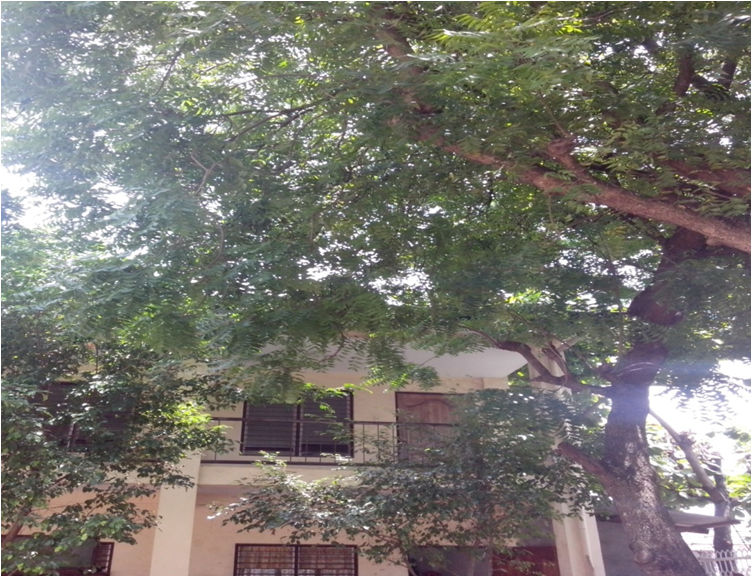 |  |
|---|
The Chart below shows the independent and dependent variables used in this project.
Definition Of Terms
For better understanding of the study, the following terms were operationally defined and used.
◾Hagonoy ➡is the local term for Chromolaena odorata; one of the plants used in the study.
◾Neem Tree ➡is the local term for Azadirachta indica; one of the plants used in the study.
◾Leaf extract ➡the crudes that were gathered in pounding and squeezing the leaves..
◾House flies ➡is the local term for Musca domestica; the annoying and nuisance insects commonly found in the household; and used as the test organism.
◾Commercial Insecticide ➡refers to a synthetic chemical mostly used as an insect killer; the positive control in the study.
◾Macroscopic Parameter ➡is the observation conducted using different senses, specifically on the length of time, the house flies died.
◾Treatment ➡refers to the different concentrations obtained from the Azadirachta indica and Chromolaena odorata.
T1: 100% of Commercial Insecticide.
T2: 100% of Hagonoy (Chromolaena odorata) crude extract.
T3: 100% of Neem leaves (Azadirachta indica) crude extract.
T4: 50% of Neem leaves crude extracts and 50% of Hagonoy crude extracts.
◾Average Time ➡is the number of the houseflies died upon the application of A. indica and C. odorata crude extracts to the number of M. domestica tested.
◾Allelopathy ➡is a process by which a plant releases chemicals that can either inhibit or benefit other plants.
OBJECTIVES:
🔑To know how to prepare an insecticide from HagoNeem.
🔑To know how effective is the “HagoNeem” insecticides from combating or repelling houseflies.
🔑To know if there are significant differences between HagoNeem extracts and the commercial insecticides in combating houseflies.
🔑To be aware of the advantages in using HagoNeem as insecticide to the environment and to human health.
Materials Used:
▫Neem leaves (Azadirachta indica)
▫Hagonoy leaves (Chromolaena odorata)
Equipments Used:
▫weighing scale
▫mortar and pestle
▫graduated cylinder
▫beakers
▫strainer (will serve as a net to ensure that the houseflies cannot escape)
▫funnel
▫cheesecloth
▫4 spray bottles for 4 treatments
What are Neem Leaves (Azadirachta indica)
Neem Tree is a tropical evergreen that has been part of traditional Asian medicine for centuries – (http://www.livestrong.com)
One of the many benefits of a Neem is being one of that most immediate practical-control for farms and household pests. Extracts from it are extremely bitter. They attack many pestiferous insects but they seem to leave people, animals and beneficial insects unharmed.
Neem open up and spread out internal chemical defences that is able to protect itself from leaf-chewing insects. They do comprise of several active ingredients and these compounds beer no resemblance to the chemicals in today’s synthetic insecticides.
What are Hagonoy Leaves (Chromolaena odorata)
Hagonoy is invasive weed specie and a herbaceous perennial that forms dense tangled bushes. --- (http://www.msuiit.edu.ph)
Hagonoy has been regarded and treated as if it is unusable. Even farmers do not seem to mind its benefits because of these weeds are sometimes problems in agriculture lands and commercial plantations. So, because of these perceptions, this investigatory project is done to make something and to use as insecticide out of Chromolaena odorata commonly known as Hagonoy.
What are House flies (Musca domestica)
House fly is a pest that got its name from being most common fly found around homes. Not only are house flies a nuisance when they are around the homes but they do also bring diseases with both to human beings and domestic animals. --- (Health and Home: Health and Fitness/Diseases)
Household pests (house flies) are simply threats to the health and safety to our families. They basically spread bacterias, diseases or allergies in our homes; damage and spoil food; can be irritating, annoying and a danger. For this reasons, this investigatory project aimed to develop an insecticide out of Azadirachta indica (Neem) and Chromolaena odorata (Hagonoy) plants.
The Potential of Neem leaves and Hagonoy leaves as Insecticides Against House Flies.
The Procedures
⚪Fresh leaves of Neem and Hagonoy were collected.
 | 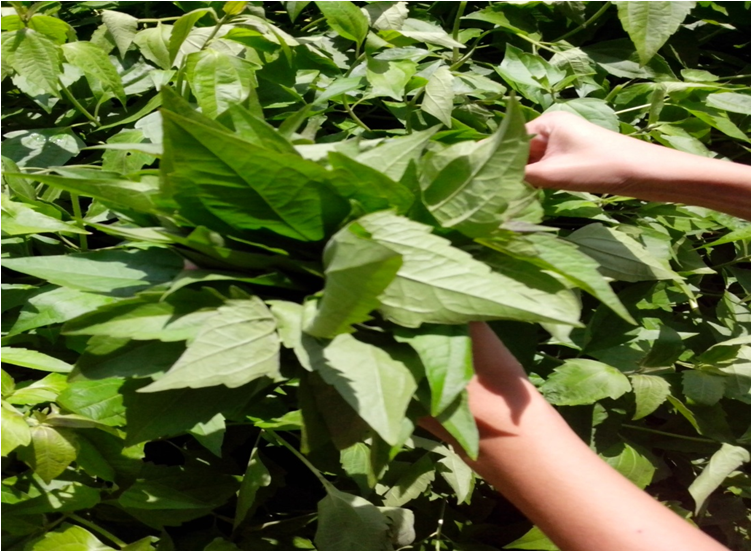 |
|---|
⚪The materials and equipments were reviewed. There must be no lacking.

⚪The leaves were washed, air-dried then weighed.
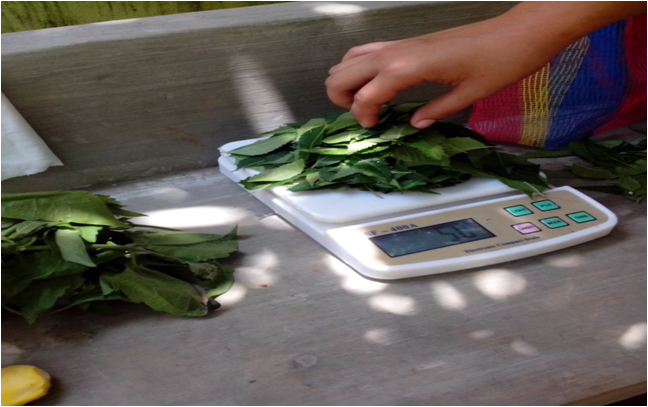
⚪After weighing to have equal amount of test samples, they were pounded.

⚪They were then put in cheesecloth and squeezed for crude extracts. And prepared the different concentrations including the commercial insecticide inside different spray bottles.
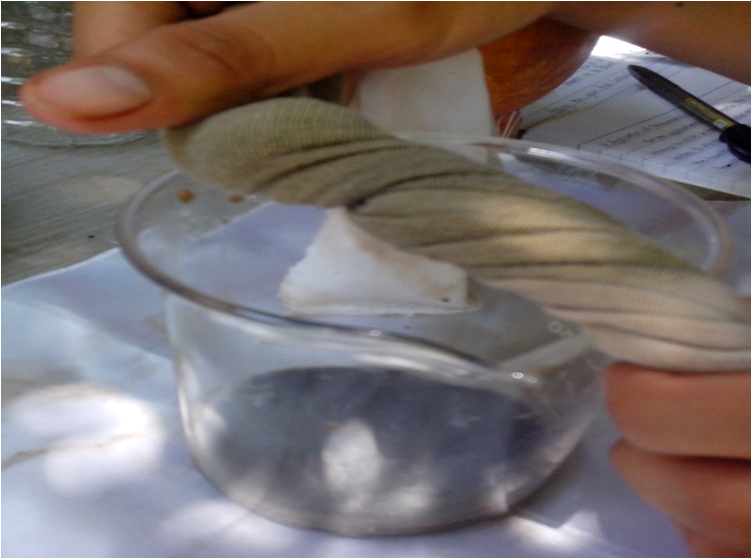
⚪The test organisms which are the house flies were collected by feeding a rotten ripe mango seed.

⚪For the applications of treatments, the houseflies were allowed to settle in the rotten ripe mango seed. As soon as it settles it will be covered by a strainer to serve as a net for the house flies not to be able to escape. The treatments are sprayed one at a time every after 1 hour to different house flies to know the effectiveness of each treatment. Then the lengths of time were noted from the time you sprayed the treatment until the house flies die.
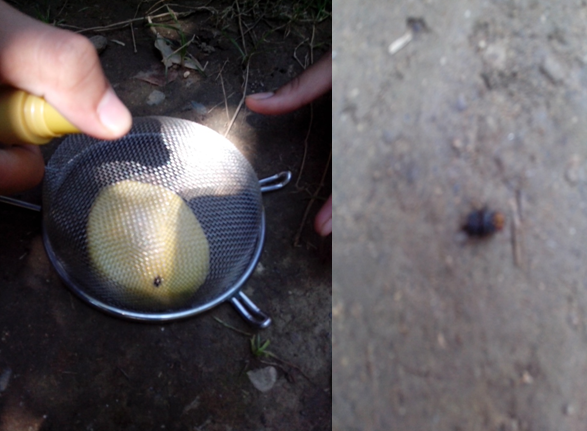
The Result
The evaluation of the insecticidal potential of Azadirachta indica and Chromolaena odorata was done by feeding house flies with rotten mango seeds. As soon as a house fly settled on the fruit it was covered with a strainer which served as a net for the test organism (Musca domestica). The length of time the house fly died was noted using a stopwatch. This was done in five replicates. The results in the length of time the house flies died upon application of different treatments are shown below.

The mortality percentages on how effective Neem leaves (Azadirachta indica) and Hagonoy leaves (Choromolaena odorata) are in combating or killing the house flies (Musca domestica) were also observed. The data on the responses of the house flies (Musca domestica) on the Application of Different Treatments are listed below.

Based on the results of the study, in terms of the length of time the house flies were killed, T4 (50% C. odorata & 50% A. indica crude extracts) proved more effective than the treatments made from Neem and Hagonoy. However, all treatments proved to have a great insecticidal potential against the most common house pests – house flies (Musca domestica). Thus, all treatments exhibited 100% mortality percentage.
Bibliography
Books:
⚫Anderson T. Et al. “Insects are Everywhere” Kingfisher Publications Plc. 2004.
Volume 5. Page. 214
⚫Clowes Martin et al. “Plant and People” Kingfisher Publications Plc. 2000.
Volume 2. Page 66-67
⚫Enyi, J. “Allelopathic Effect of Azadirachta indica and Chromolaena odorata” L. (R.M.King and Robinson).2001
⚫Rilloma Nestor et al. “Herbs for Life” Health and Home Philippine Publishing House. 2006. Volume 47
Internet Sources
⚫http://www.google.com
⚫http://www.en.wikipedia.org
⚫http://www.livestrong.com
⚫http://www.msuiit.edu.ph
In our current society nowadays, we all have more effective insecticides that can easily be bought from stores but what I am articulating is the potential that this study can serve as baseline information for studies on the use of Azardirachta indica and Chromoaleana odorata as economic friendly insecticides. So I do hope you learn something interesting out of this experiment. The photos used are all mine just in case you wonder. Thank you very much and have a great day ahead.
Yours Truly,
SISSY
I am a part of @steemitfamilyph. Join us! Follow - Upvote - Resteem - Comment
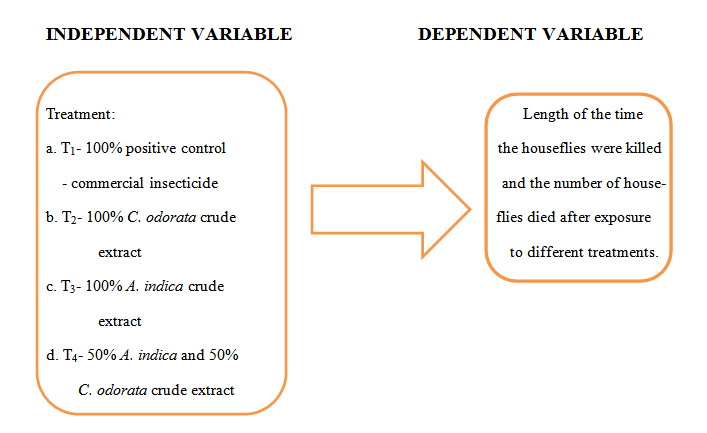

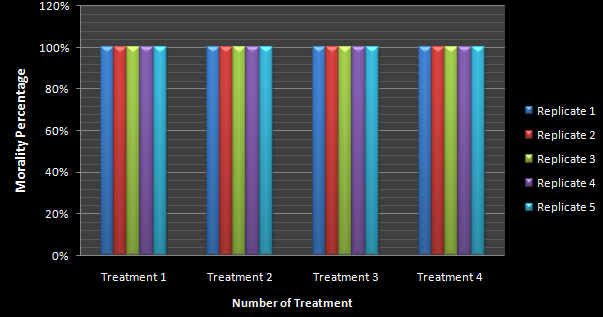

nicely written my friend.
A very Informative Post @sissyjill, Your data gathered are great and It is a very important matter, you make it plain and elaborated. very well. I dont think so, how much time do you spend making this such blog.,This is the best for @steemiteducation
Nice! Very interesting!
Trees are really essential and when destroyed can impede on the grow of man and can even result into the Extinction of certain living organisms. And also trees can serve as good medicinal purpose and can be used for food too. Thanks for such a post.
great project sissy i must say its very much informative post ... 😊
Thanks for the information sir.
Nice project their kabayan :) keep up the good work ^^
This is good for a DIY insecticide as well as pesticide at home. Nice research. Keep it up !
A very informative and helpful sharing.
Good article worth ..reading
Will like to add that, pesticides though helpful , but they have deleterious effect on humans. Safety while using them is very important. Some can be teratogenic, carcinogenic and mutagenic
I agree with you this is a great article
https://uma.ac.id/